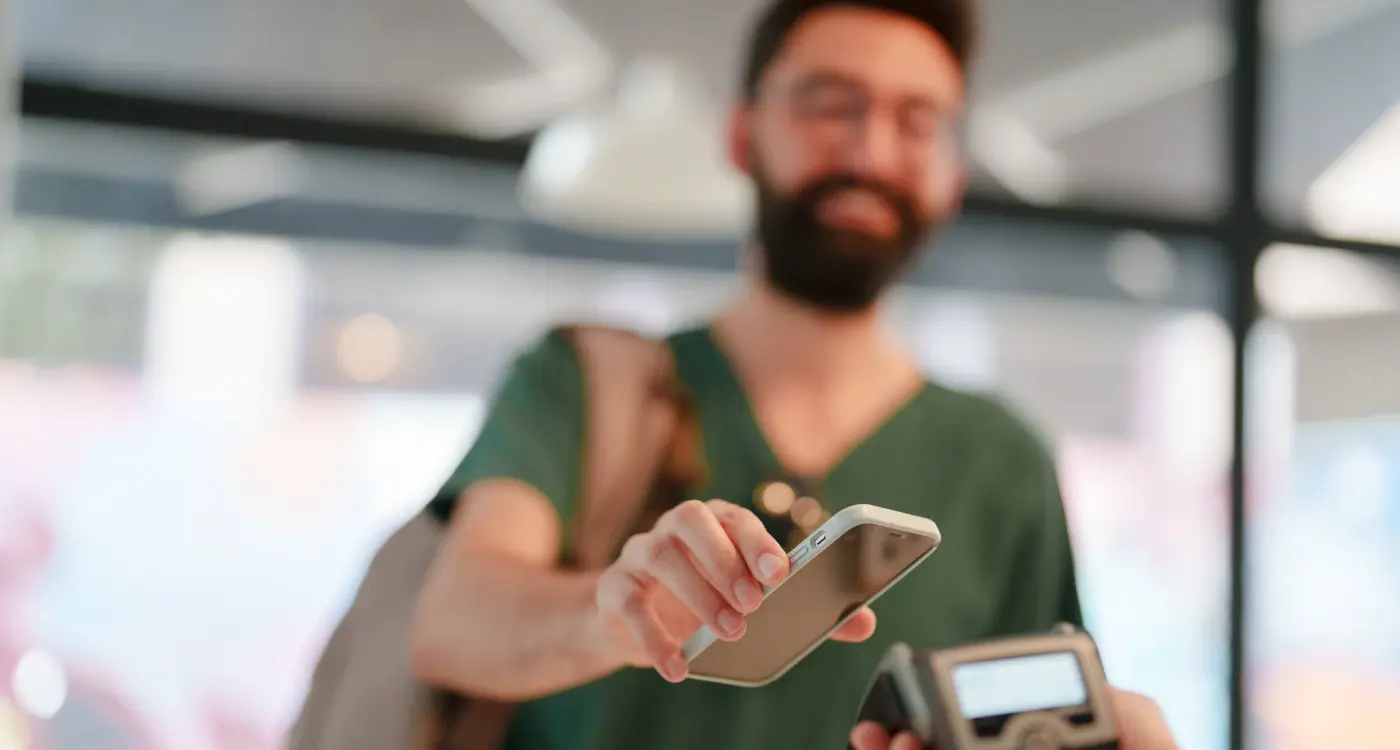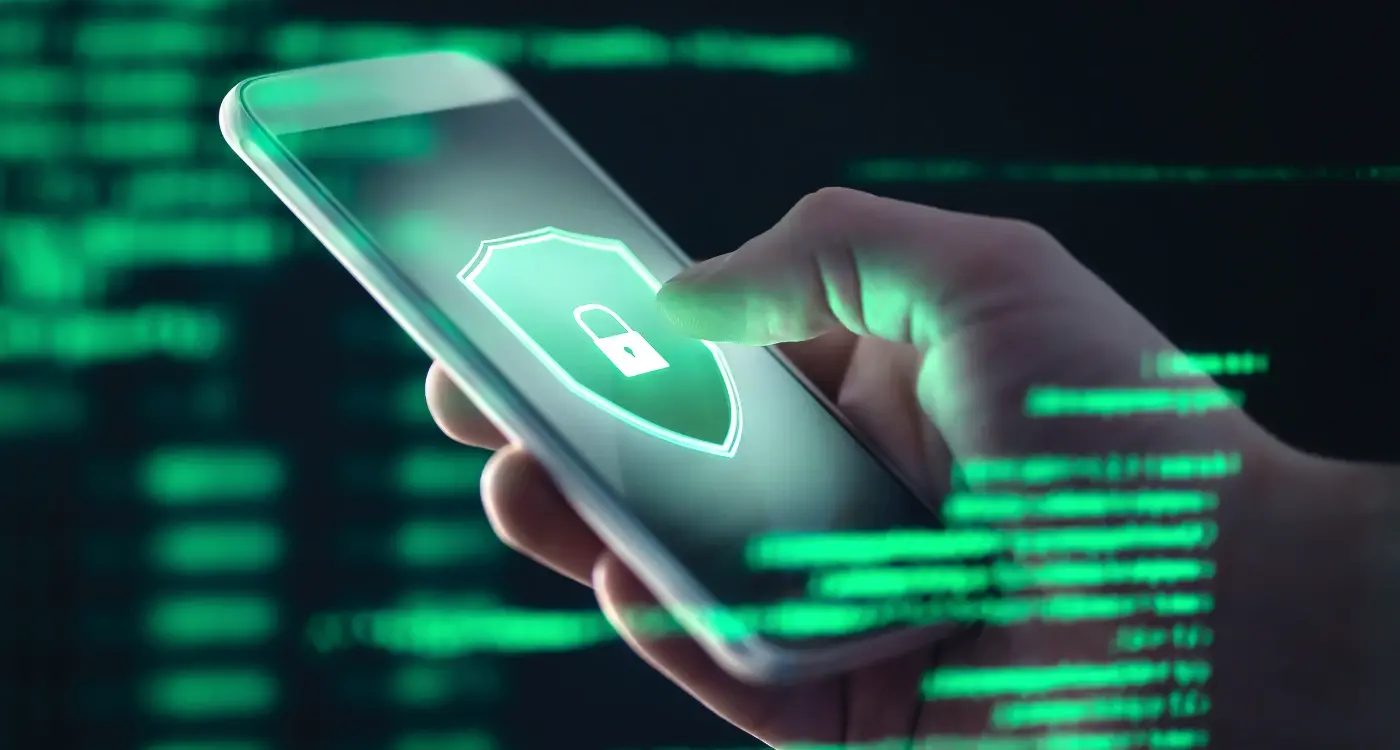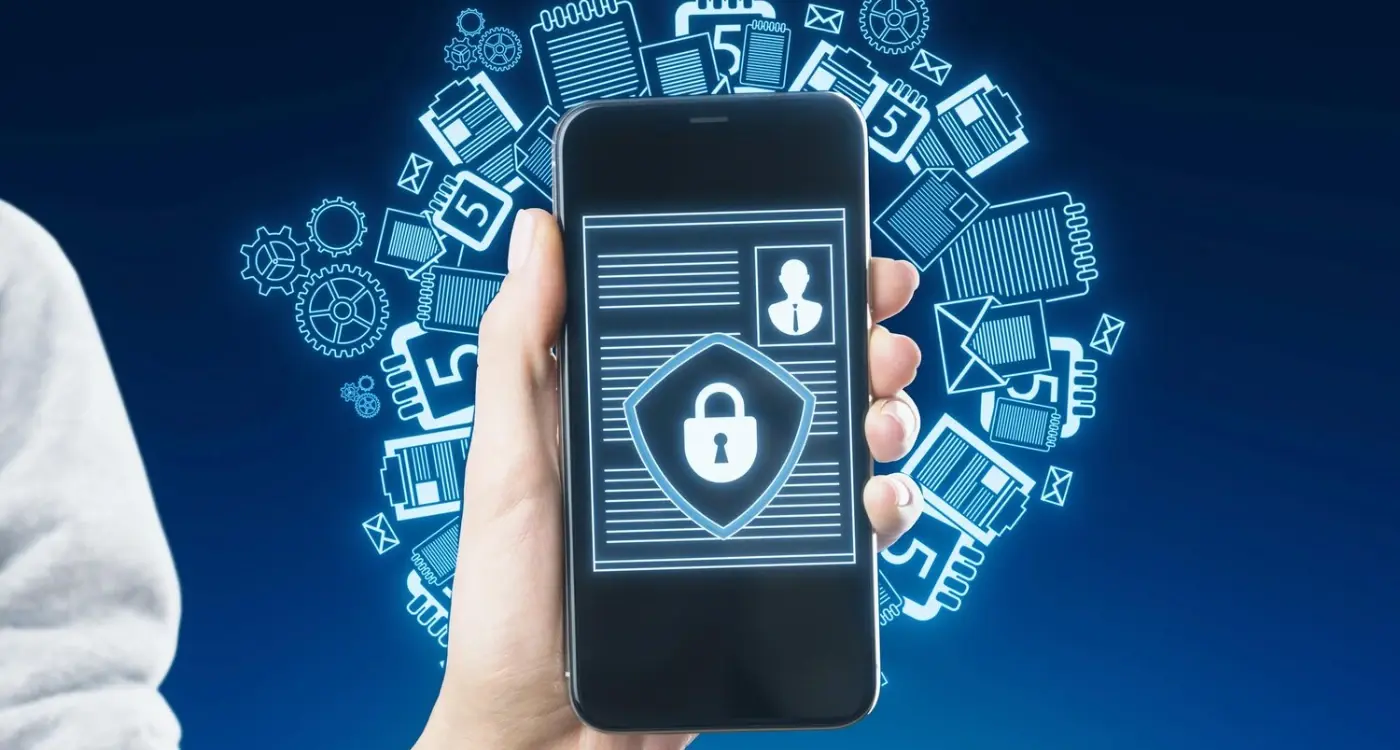How Do I Protect User Data in My Mobile App?
Here's a number that stopped me in my tracks: 79% of mobile apps have security flaws that could put user data at risk. That's nearly four out of every five apps sitting on people's phones right now. When you think about all the personal information we store and share through our mobile apps—photos, messages, payment details, location data—it becomes clear why protecting user data isn't just good practice, it's absolutely necessary.
I've been working in mobile app development for years, and I can tell you that data protection has gone from being a nice-to-have feature to being the foundation everything else is built on. Users are more aware than ever about their privacy rights, and they're not afraid to delete apps that don't take their data seriously. The regulations have caught up too—laws like GDPR mean that getting data protection wrong can cost you serious money, not just users.
The best security measures are the ones users never have to think about—they just work quietly in the background, keeping everything safe.
But here's the thing that many app developers don't realise: protecting user data doesn't have to be complicated or expensive. It's about understanding what data you're collecting, why you need it, and how to keep it safe at every step. Whether you're building your first app or your fiftieth, getting the basics right from the start will save you headaches later. This guide will walk you through everything you need to know—from setting up proper authentication to testing your security measures—so you can build an app that users trust with their most personal information.
Understanding User Privacy and Personal Data
Let's be honest—user privacy isn't the most exciting topic when you're building an app, but it's one of the most important things you'll need to get right. Personal data is any information that can identify a real person; this includes obvious things like names and email addresses, but also less obvious data like device IDs, location information, and even how someone uses your app.
The tricky bit is that different countries have different rules about what counts as personal data and how you can use it. In Europe, the GDPR is quite strict—they consider IP addresses and cookies as personal data. In other places, the rules might be more relaxed, but that doesn't mean you should be careless with user information.
What Data Are You Actually Collecting?
Many app developers collect far more data than they realise. Your analytics tools might be grabbing user behaviour patterns; your crash reporting system could be collecting device information; even basic features like user accounts involve storing personal details. The key is knowing exactly what you're collecting and why you need it.
Why Users Care About Their Privacy
People are becoming much more aware of how their data is used, and frankly, they have good reason to be concerned. Data breaches happen regularly, and users want to know their information is safe with you. When users trust your app with their data, they're more likely to engage with your features and recommend your app to others—but if you mess up their privacy, they'll delete your app faster than you can say "data breach".
Setting Up Strong Authentication and Access Controls
When it comes to protecting user data in your mobile app, authentication is your first line of defence. Think of it as the bouncer at a club—you want to make sure only the right people get in. But here's the thing: many developers still rely on simple username and password combinations, which frankly isn't enough anymore.
Multi-factor authentication (MFA) should be your go-to approach. This means users need to prove who they are in more than one way. Maybe they enter their password and then receive a text message with a code. Or they use their fingerprint along with their password. It might seem like extra work for users, but most people understand why it's needed—especially when their personal information is at stake.
Types of Authentication Methods
- Biometric authentication (fingerprints, face recognition, voice)
- SMS or email verification codes
- Authentication apps that generate time-based codes
- Hardware tokens or smart cards
- Push notifications for approval
Start with biometric authentication if your target devices support it. Users find it convenient and it's much more secure than passwords alone.
Access Control Best Practices
Once someone is authenticated, you need to control what they can access. Not every user should see the same information or have the same permissions. Set up role-based access controls that limit what each user can do based on their account type. Regular users might only see their own data, whilst administrators can access broader system information.
Remember to implement session timeouts too. If someone leaves their phone unlocked, you don't want their app session to stay active indefinitely. Auto-logout after a period of inactivity keeps accounts secure even when users forget to log out manually.
Encrypting Data Storage and Transmission
Right, let's talk about encryption—the technical bit that makes your user data unreadable to anyone who shouldn't be seeing it. Think of encryption like turning your data into a secret code that only your app knows how to read. Without it, you're basically storing everyone's personal information in plain text, which is about as secure as leaving your front door wide open.
When we talk about encrypting data storage, we're protecting information that sits on the user's device and on your servers. Modern mobile platforms like iOS and Android actually handle a lot of this automatically, but you can't just rely on that. You need to actively encrypt sensitive data like passwords, payment details that require secure processing, and personal information before storing it. AES-256 encryption is the gold standard here—it's what banks and governments use, so it's probably good enough for your app too.
Protecting Data in Transit
Now, transmission encryption is all about protecting data as it travels between your app and your servers. Every single bit of communication should happen over HTTPS with TLS encryption. No exceptions. I've seen apps that switch to plain HTTP for certain requests to save a few milliseconds of loading time, and that's just asking for trouble.
Implementation Best Practices
Here's what you need to do: encrypt everything at rest using strong algorithms, never store encryption keys alongside your data, and always use the latest TLS versions for network communications. Certificate pinning is another layer you should consider—it stops bad actors from intercepting your app's communications even if they've compromised other parts of the network. Yes, it's technical stuff, but get this wrong and you'll be explaining to users why their data ended up in the wrong hands.
Implementing Secure Communication Protocols
When your mobile app talks to servers, databases, or other services, it needs to do so securely. Think of it like having a private conversation—you wouldn't want strangers listening in, right? That's exactly what secure communication protocols do for your app; they create a private channel where sensitive information can travel safely.
The gold standard for secure communication is HTTPS, which uses something called TLS (Transport Layer Security). This protocol encrypts all data that flows between your app and your servers, making it nearly impossible for hackers to intercept and read. Most developers know about HTTPS, but here's what many miss: you need to implement certificate pinning too. This extra step makes sure your app only connects to your legitimate servers, not fake ones set up by attackers.
API Security Best Practices
Your mobile app likely connects to APIs to fetch user data, process payments, or sync information. Each API call should include authentication tokens that expire regularly—think of them as temporary passes that need renewing. Never send sensitive data like passwords or payment details through URL parameters where they might get logged or cached. When working with APIs, understanding the differences between public and private APIs can help you implement the right security measures for each type.
The weakest link in any security chain is often the communication layer—get this wrong and all your other security measures become pointless
Real-Time Communication Security
If your app uses real-time features like chat or live updates, you'll need secure WebSocket connections (WSS) or similar encrypted channels. These work just like HTTPS but for ongoing conversations between your app and servers. Don't forget to validate every message and authenticate users before they can access real-time features—it's surprisingly easy to overlook this step during development.
Managing User Permissions and Data Collection
When you're building a mobile app, one of the biggest mistakes I see developers make is asking for too many permissions right from the start. Users open your app for the first time and immediately get bombarded with requests for their location, camera access, contacts, and microphone. It's overwhelming—and frankly, it makes people suspicious about what you're planning to do with all that information.
The golden rule here is simple: only ask for what you actually need, and only ask when you need it. If your app is a simple calculator, why would you need access to someone's camera? If it's a photo editing app, you probably don't need their location data. This approach is called the principle of least privilege, and it's not just good practice—it's what users expect.
When to Request Permissions
Timing matters enormously when requesting permissions. Instead of asking for everything upfront, request permissions contextually. When someone taps the "add photo" button, that's when you ask for camera access. When they want to share their workout route, that's when you request location data. This way, users understand exactly why you need each permission.
What Data Should You Actually Collect?
Before collecting any user data, ask yourself three questions: Do I need this data to make my app work? Will this data improve the user's experience? Can I achieve the same result with less personal information? If the answer to any of these is no, don't collect it.
Here's what you should always do when managing permissions:
- Explain clearly why you need each permission before requesting it
- Provide your app's core functionality even if users deny certain permissions
- Allow users to change their mind about permissions later in settings
- Store only the minimum data required for your app to function properly
- Delete data when users remove your app or close their accounts
Remember, users trust apps that are transparent about data collection. Giving users control over their app preferences extends beyond just visual settings—it includes their data and privacy choices too. Be honest about what you're doing with their information, and they're much more likely to grant the permissions you actually need.
Testing Your App's Security and Privacy Features
Building security measures into your mobile app is one thing—but making sure they actually work is quite another. I've seen too many developers skip this step, thinking their code is bulletproof. Trust me, it rarely is.
Start with penetration testing. This involves trying to hack your own app before the bad guys do. You can hire specialist firms for this, or if budget's tight, use automated tools like OWASP ZAP or Burp Suite. These tools will probe your app for common vulnerabilities like SQL injection, cross-site scripting, and weak authentication systems.
User Privacy Audits
Next up is checking your user privacy controls. Create test accounts and see what data you can access, modify, or delete. Can users actually remove their personal information when they request it? Do your permission settings work as intended? Sometimes what looks right in the code doesn't behave correctly in the real world.
Set up automated security scans that run every time you update your app. This catches new vulnerabilities before they reach your users.
Real-World Testing
Don't forget about testing on actual devices—not just simulators. Different operating systems handle security differently, and what works on iOS might have gaps on Android. Test your app's behaviour on public Wi-Fi networks too. This is where many security flaws become obvious, especially if your data transmission isn't properly encrypted.
Keep records of all your testing. If there's ever a data breach investigation, you'll need to show you took reasonable steps to protect user information. Regular testing isn't just good practice—it's your safety net. If you're considering formal security certification for your app, thorough testing documentation will be essential for the process.
Maintaining Data Protection Over Time
Data protection isn't a one-and-done task—it's more like maintaining a car. You wouldn't expect your car to run perfectly forever without regular check-ups, and your app's security needs the same ongoing attention. The threat landscape changes constantly, new vulnerabilities are discovered, and regulations get updated. What worked perfectly when you launched might leave you exposed six months down the line.
Regular security audits should become part of your routine maintenance schedule. I recommend conducting thorough reviews at least every quarter, but monthly checks are even better if you can manage them. During these audits, you'll want to review user permissions, check for outdated encryption methods, and test your authentication systems. Don't forget to examine your third-party integrations too—they often introduce new risks as they update their own systems.
Staying Current with Updates
Keep your development frameworks, libraries, and dependencies up to date. Security patches are released regularly for good reason. Create a system to monitor these updates and prioritise security-related ones. Your users trust you with their personal information, so maintaining that trust requires consistent effort. This is particularly important when considering how network upgrades might affect your app's security protocols.
Building a Response Plan
Despite your best efforts, security incidents can still happen. Having a clear response plan ready means you can act quickly to protect your users and minimise damage. Your plan should cover how you'll identify breaches, notify affected users, and work with authorities if needed.
- Schedule regular security audits and penetration testing
- Monitor and update all third-party dependencies
- Review and update privacy policies as regulations change
- Train your team on new security threats and best practices
- Maintain detailed logs for security monitoring
- Test your incident response procedures regularly
The companies that handle data protection well are the ones that treat it as an ongoing commitment rather than a box to tick. When selecting development partners, verifying their security expertise becomes crucial for maintaining these high standards.
Conclusion
Building a secure mobile app isn't just about ticking boxes on a compliance checklist—it's about earning and keeping your users' trust. After years of working with clients who've learnt this lesson the hard way, I can tell you that getting user privacy and security measures right from the start saves you headaches later on.
The mobile app market is more competitive than ever, and users are becoming increasingly aware of how their data is being used. They want apps that work well but they also want to feel safe using them. If your app handles their personal information carelessly, they'll find another one that doesn't—and they'll probably tell their friends about their bad experience too.
What we've covered in this guide gives you a solid foundation: strong authentication keeps the wrong people out; encryption protects data when it's stored and when it moves between devices; secure communication protocols stop hackers from intercepting information; proper permission management means you only collect what you actually need; regular testing catches problems before users do; and ongoing maintenance keeps everything working as it should.
The thing is, data protection isn't a one-time job. New security threats pop up regularly, operating systems get updated, and privacy laws change. Your mobile app's security needs to evolve too. Set aside time each month to review your security measures, update your systems, and check that everything is still working properly. Your users are trusting you with their personal information—that's not something to take lightly.
Share this
Subscribe To Our Learning Centre
You May Also Like
These Related Guides

How Do I Handle Ticket Sales and Payments Securely in My Event App?

What Security Testing Should Every App Go Through?



